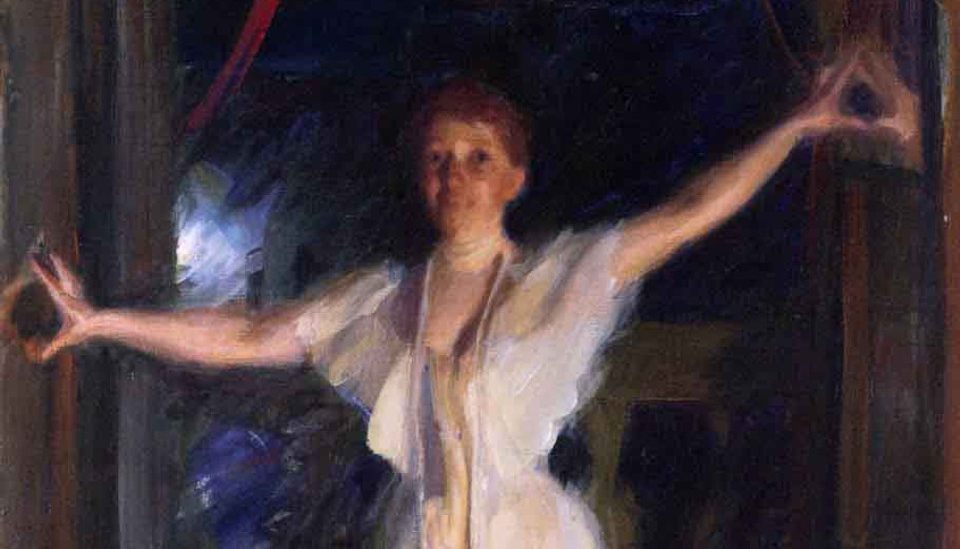I’d never heard of Isabella Stewart Gardner before Monday night. She was a patron of the arts in the 1800s and as a child, she went to Grace Church on Broadway, where we go. Two of her siblings died, prompting her parents to buy a stained-glass window in their memory. So, Grace Church co-hosted a reading about a new biography of Mrs. Gardner by Natalie Dykstra earlier this week. The Strand Bookstore, up the street, was also involved. I was ready to dismiss Mrs. Gardner as a rich lady dabbling in the arts like a tourist. But the reality was much more interesting and inspiring. I even bought a copy of the book and recommend you do.
On top of losing her siblings, Mrs. Gardner also had a miscarriage and lost her only child, Jackie, when he was just two. The age is close enough to our own child that hearing about it horrified me. That loss and another later miscarriage plunged her into deep despair. I can’t begin to fathom how she must have felt. Being married to a rich man and coming from wealth herself was scant consolation, I would imagine.
Yet on the advice of doctors, she began to travel. It’s true that being wealthy doesn’t buy happiness, but it can divert you when you’re depressed. And she did, indeed, travel. She also bought art—a self-portrait of Rembrandt at 22. An enormous Titian which she hung by her fireplace. Pieces by Manet, Degas, and Matisse. She associated with the watercolorist, John Singer Sergeant. She sponsored artists. In a good way, she went a little nutty about art. From Megan O’Grady in the New York Times:
“Like other wealthy American collectors, Gardner delighted in the thrill of the hunt — and part of the pleasure of this exquisitely detailed and perceptive biography is in imagining which Vermeer we might have bid on in Gardner’s bejeweled shoes, or where in our own homes we’d hang the Rembrandt.”
The painting by Anders Zorn of her in Venice in 1894 shows her at a palazzo. On the evening of October 20, she went out to the balcony to see a display of fireworks. Coming back into the room filled with guests, she threw open the glass doors and said, “Come out—all of you. This is too beautiful to miss.”
It’s a mundane quote, but I gather that her life was often about the tension between words and experience. I get a sense of the bold person who said it from the painting. It’s captivating. And this all happened 30 years before my grandmother, who just turned 102, was born. Mrs. Gardner’s zeal for beauty and passion strike me in an era where many people were conservative. They’re even more remarkable following the death of a child and a lengthy depression. It is as if she must have decided to pursue beautiful things as a response to such deep misfortune and hurt. That’s an inspiring outlook for any of us as we come to terms with unfairness in the universe.
There was also something palpably defiant about her which struck me across time. Again, in the Times:
“What gives art real power, after all, isn’t its moneyed visionaries, but its ability to inspire impassioned encounters in all of us. And while Gardner, largely alone in her fortress of priceless objects in her later years, strikes a poignant figure, there’s a sense of invincibility, too. In her will, Gardner mandated that nothing could be rearranged in the museum’s galleries; in the end, no one else’s judgment mattered but her own.”
That’s my kind of person. Egotistical and capricious? Sure. Likewise, unafraid of judgement and prepared to back herself. She’d seen enough heartbreak in her life to have confidence in what made her happy.
After the talk I loved talking with a few of the other people at the church about art we’ve bought. It turns out we’ve all bought stuff we liked, that spoke to us, not as an investment, but as an affirmation of life, often in the face of tricky darkness. Have you ever bought any art? Why? Or perhaps a deeper question could be: Why not?


